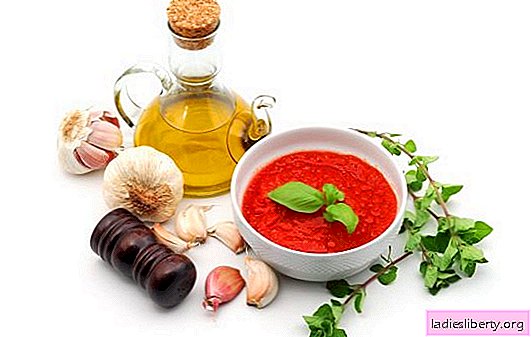
Watermelon is a giant berry, enjoyed by both children and adults. In addition to tastes, it is also very useful, it is often used in diets, and also helps in cleaning the kidneys and removing toxins. With all the usefulness of this berry, you should be wary of nitrates, which many manufacturers add to watermelons. What to do in this situation? How to check watermelon for nitrates at home?
Let's try to figure out how to learn to determine a healthy berry from a harmful one and what to do if you already ate a watermelon with nitrates?
How to check watermelon for nitrates at home: general information
As we mentioned above, watermelons are a very tasty and healthy product, but not everyone can grow them on their own. The thing is that this fruit has an extremely unpleasant ability - the accumulation of nitrates. So, if the norm is exceeded, they can cause digestive upset and poisoning. If they enter the body regularly, this is fraught with the formation of nitrites, which can cause already more serious health problems.
The greatest danger lies in wait for lovers of this dessert with the start of the season. The reason is that producers, in order to get an early harvest as soon as possible, almost all crops feed on nitrates. The situation is aggravated by the fact that many of them, in order to get the maximum profit, cannot stop and exceed the permissible nitrate norm several times. So, a watermelon, in which so many chemicals are “stuffed”, is transformed from a delicious treat to a dangerous product that threatens your health, especially the digestive system.
Important! Do not buy the first early berries and fruits, as they represent the maximum health hazard. This is especially true for children.
In connection with the occurrence of such a problem, the following question becomes relevant: how to check a watermelon for nitrates at home in order to protect yourself and your loved ones from bad consequences?
Of course, the best and most accurate option for determining the number of nitrates in a berry will be the use of laboratory methods or a special device - nitratomer. However, not everyone has this device at their disposal. Therefore, when choosing a fetus when buying, first of all, you should carefully examine and study it.
In fact, such a check can be done without laboratory conditions or special devices, there are signs that will allow you to make a qualitative assessment of the suitability of this berry for food and at home.
In addition, it is necessary to learn how to choose a berry correctly, since its quality can be easily determined even before purchase. To do this, you need to look at the watermelon itself and the equipment of the trading place (it often happens that even a high-quality fruit can deteriorate due to insufficient conditions for its storage).
How to check watermelon for nitrates at home: how not to make a mistake with the choice?
Nitrates have the ability to dissolve perfectly in water, most often used to fertilize plants. Not everyone knows that each product initially contains a certain amount of nitrates. But their number is not critical at all and they do not pose any serious danger to human health.
Nitrates themselves do not pose a serious threat, however, when they enter the gastrointestinal tract, the process of conversion to nitrites begins, which, in turn, have strong toxicity to the body and lead to oxygen starvation of tissues.
Nitrates, when ingested in the human body, can reduce the amount of vitamins in food that enters the body and disrupt the thyroid gland. If the daily norm of nitrates is exceeded, a person is threatened with an upset stomach, blue skin, heavy breathing, diarrhea and other bad signs of poisoning.
So, how to determine whether you are offered a quality watermelon even before it is bought? See under what conditions the fruits are stored, are they neatly stored in clean containers? Track so that watermelons do not lie on the floorand no dirt got on them. No need to take risks and get a cracked, broken or crumpled fruit. A ripened watermelon grown in a natural environment will have a dry tip, and if you tap it, it will make a characteristic ringing. It is not advisable if the berry upon examination of its slice, the surface will shimmer with a purple tint.
Keep track of the season and don't buy the first watermelons. An experienced buyer always understands at what point you need to refuse to purchase. Watermelons with the most nitrates can often be bought in the first half of July. If you get fruits starting from the second half of August and later, you can no longer be afraid that the amount of “chemistry” in them exceeds the permissible norm, most often they simply are not there.
Most sellers give their customers the opportunity to taste a small bite immediately before purchasing. In the supermarket, in order to show the fruit from the inside, it is cut into two parts, after which it is wrapped in a thin plastic wrap through which you can easily see any flaw. However, a visual inspection does not make it possible to determine the presence of “chemistry” in the berry.
The most accurate information about the amount of unnecessary substances in the berry can be obtained thanks to a special device - nitratomer. But, unfortunately, this device is not cheap, and not everyone can afford it. Therefore, in this case, it is better to use folk signs.
How to check watermelon for nitrates at home: good advice
There are several options for checking the fetus at home:
1) the watermelon is completely lowered into a container filled with water (for example, into the bathroom). If the fetus begins to emerge - you don’t have to doubt its quality, if it goes to the bottom - it’s better to refuse the use, because it is full of nitrates;
2) in a pure fruit on the cut there will be bumps, grains. If the cut is perfectly smooth and bright, such a fruit is unsafe, especially for children;
3) the presence of large veins in the pulp of a yellowish or whitish hue is a clear sign of the presence of chemicals;
4) study the cut in the light - if its surface shimmers somewhat with a purple tint - it is better not to eat it;
5) take a piece of pulp, dip it in clean water and leave for 15-20 minutes. If the water begins to get cloudy - the fruit is of good quality, if it starts to turn bright pink or reddish - it is full of chemical fertilizers.
How to check watermelon for nitrates at home: how to use a berry?
Do not forget about the simplest rules for using this treat:
- watermelon can be considered a completely independent dish. It is better to eat it 1-2 hours before a meal (you do not need to combine watermelon with other foods to avoid overloading the stomach);
- Before eating the fruit, do not forget to thoroughly rinse it under running water;
- the maximum number of nitrates is stored in the peel of the berry, so you do not need to eat it to the very crust.
- If you still come across a fetus with nitrates and you ate it, in a few hours you should expect these symptoms:
- nausea, in rare cases, vomiting;
- diarrhea;
- colic, abdominal cramps;
- general malaise;
- headache or dizziness;
- temperature rises.
What to do if you feel that you have been poisoned by a watermelon:
1) first of all, gastric lavage should be done with the maximum amount of warm water with a pink solution of potassium permanganate;
2) take enterosorbents - drugs that help neutralize poisons in the intestines. These include: activated carbon, Enterosgel, Smecta, and others;
3) use the maximum amount of liquid - this will speed up the removal of unnecessary substances from the body and reduce the risks of dehydration;
4) drink sweet tea with lemon - this will stop the process of nausea.
5) you do not need to use drugs for pain and diarrhea - they will not correct the situation, but only mask the current state of the body.
As you can see, it is not so difficult to determine the presence of nitrates in a watermelon. Follow simple rules and be vigilant, do not use suspicious watermelons and do not give them to children. Be healthy!











